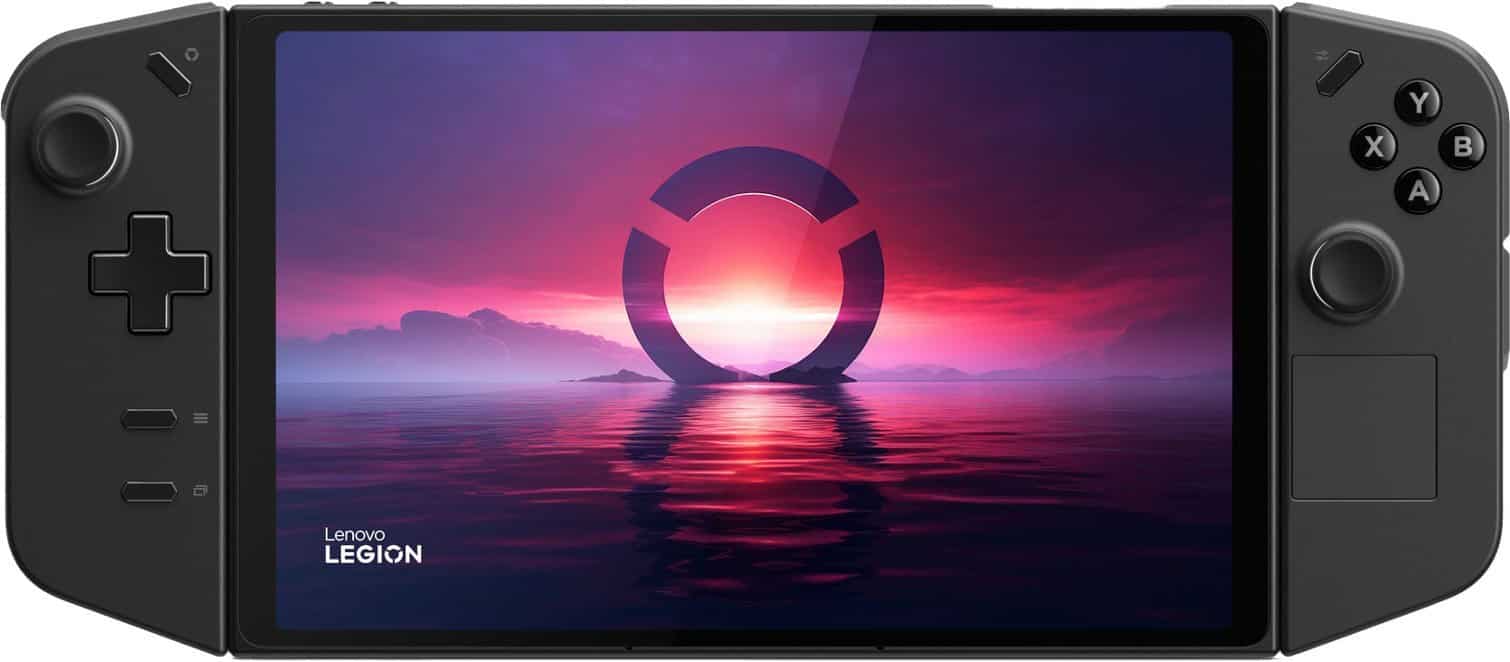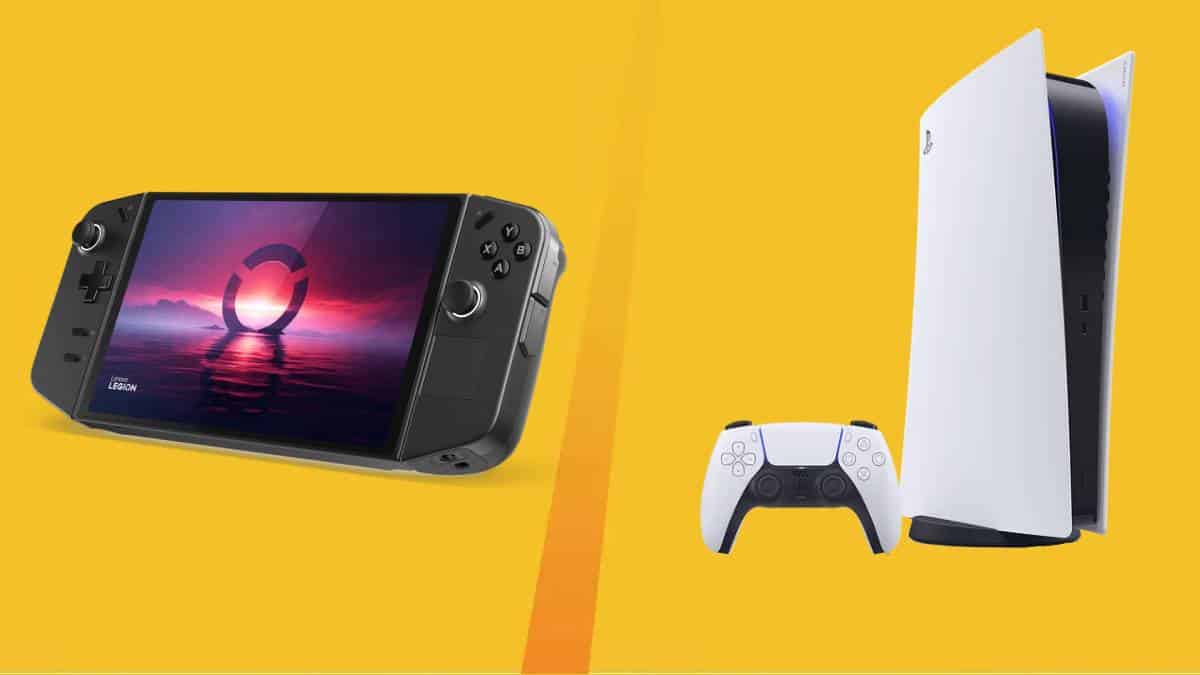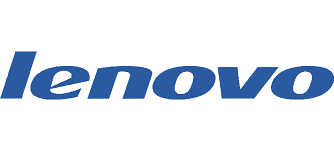You can trust VideoGamer. Our team of gaming experts spend hours testing and reviewing the latest games, to ensure you're reading the most comprehensive guide possible. Rest assured, all imagery and advice is unique and original. Check out how we test and review games here
If you’re weighing up the Lenovo Legion Go vs PS5 then we’re here to help. We’re comparing the technical specs and performance to help you make the right call.
The Lenovo Legion Go’s release date may not yet have passed but that hasn’t stopped its impressive specs raising from eyebrows. From what we’ve seen so far, the handheld console looks set to go head to head with the likes of the Asus ROG Ally, and Steam Deck – but how does it shape up versus a traditional games console?
It might be harder to take with you on the train, but it’s hard to deny that the PS5 is a powerful gaming device in its own right. Since its release in 2020, the console has sold a stagger 40 million+ units, cementing itself as one of the most popular consoles of all time.
Let’s have a look at how they compare.
How do the specs compare between the Lenovo Legion Go and the PS5?
| Specification | Lenovo Legion Go | PS5 |
|---|---|---|
| Display size | 8.8in | N/A |
| Display resolution | 2560 x 1600 | N/A |
| Refresh rate | 144Hz | N/A |
| GPU | AMD RDNA 3 graphics | AMD RDNA 2 graphics |
| CPU | AMD Ryzen Z1 Extreme | Custom AMD Zen 2 |
| Core/ Thread count | 8 core, 16 threads | 8 core, 16 threads |
| Memory count | 16GB | 16GB |
| Memory type | LPDDR5x | GDDR6 |
| Storage | 512GB, 1TB | 1TB |
Let’s start with the absolute basics. The Lenovo Legion Go has a built-in screen, the PS5 does not. It’s a good screen too, with a higher resolution, refresh rate, and size than its main handheld competition. With that obvious difference out of the way, let’s get into the meat and potatoes.
The CPUs of both devices have identical core and thread count, though the Z1 extreme does feature slightly more up-to-date technology giving an edge in terms of clock speed.
Both consoles also have 16GB of memory, which is good for modern gaming. While the memory type is different, the LPDDR5X just means that it is more compact and portable. This does bring with it a slightly smaller bandwidth but this has a minimal effect on performance.
It should be noted that while the PS5 comes with up to 1TB of storage, only 800GB of that is actually available for usage, with the rest being taken up by system files. That said, with the PS5 you do always have the option to insert a physical disc if storage runs out, which cannot be done on the Legion Go.
While it is the gaming monitor which will determine the refresh rate of any game you’re playing on the PS5, the console itself is limited to outputting a maximum of 120fps. This is just a touch behind the 144Hz capabilities of the Legion Go.
How does the GPU of the Lenovo Legion Go compare to the PS5?
One of the key differences lies in the GPU architecture of each device. The PS5 was released back in 2020 and its custom GPU featured what was then the cutting edge of GPU architecture: RDNA 2. This technology is by no means obsolete now but has been surpassed by the next-gen RDNA 3 which features in the Lenovo Legion.
One of the main areas of improvement RDNA 3 brought was in energy efficiency, with AMD claiming that RDNA 3 offers an increase in performance-per-watt of 50%, over RDNA 2.
RDNA 2 introduced Infitinty Cache to the world, a gaming technology that hugely increases the bandwidth capabilities of a GPU, and, as a result, improves performance. RDNA 3 takes Infinity Cache next generation, offering an even bigger boost to performance.
How does the price of the Lenovo Legion Go compare to the PS5?
The Lenovo Legion Go comes in two different varieties, which differ in storage capacity and price. The cheaper option, though perhaps cheap isn’t quite the right word, gives you 512GB of storage for $699, or you can opt for 1TB for $749, just $50 more.
The PS5 launched with an MSRP of $499 and has remained at that price ever since, though it is occasionally possible to find it on offer. This is a pretty good price, considering just how much power it packs under the bonnet. It also managed to undercut the Legion Go on price while offering a larger amount of storage. That said you will have to also buy one of the best monitors for the PS5 to start actually gaming, which will set you back some extra cash.
Sony – PlayStation 5 Console

RAM
16GB
Storage
1TB
Storage Type
SSD
Frame Rate
120@ 1440p / 60 @ 4K
Lenovo Legion Go 1TB

Display
8.8in
CPU
AMD Ryzen Z1 Extreme
RAM
16GB
Storage
1TB
Final word
Both these consoles are likely to offer a great return on your investment. This means that comparing the two is more a question of figuring out which one makes the most sense for you, rather than asking which one is outright ‘better’.
The Lenovo Legion GO looks set to be the more capable device. It has slightly superior specs and the ability to generate frame rates all the way up to 144Hz. However, this superior performance is likely to be marginal, and it will set you back a couple hundred dollars extra.
The most important thing to consider is the kind of console you want. If you are looking for a living room set-up, it is likely the PS5 will make the most sense. If you want to game on the move, no question, you should try and snag a Legion Go on release day. We’ll be updating this article with benchmarks when the Legion Go has been released and we’ve had the chance to get hands-on with the device.









